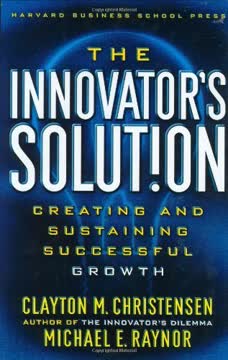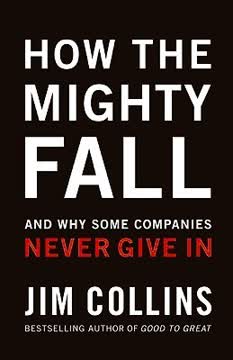가지 주요 요점
1. 작은 변화가 설득력을 극대화할 수 있다
"작고 간단한 메시지 변경이 설득력을 크게 높일 수 있다."
미묘한 조정이 중요하다. 요청을 하거나 정보를 제시하는 방식을 약간만 조정해도 설득력이 크게 향상될 수 있다. 예를 들어:
- 요청할 때 "왜냐하면"이라는 단어를 사용하면, 그 뒤에 명백한 이유가 따라오더라도 순응도가 증가한다.
- 손글씨로 쓴 메모를 추가하는 등 메시지를 개인화하면 응답률이 높아진다.
- 고객의 주문을 그대로 반복하면 웨이터의 팁이 증가한다.
언어 선택이 중요하다. 우리가 사용하는 특정 단어와 구절이 설득 시도의 성공 여부를 결정할 수 있다:
- 옵션을 이익보다는 손실로 프레임하면 행동을 더 효과적으로 유도할 수 있다.
- 운율을 사용하면 진술이 더 정확하고 진실하게 느껴진다.
- 희소성이나 독점성을 강조하면 인식된 가치와 욕구가 증가한다.
2. 사회적 증거는 인간 행동에 강력한 영향을 미친다
"사람들이 행동 방침에 대해 불확실할 때, 그들은 자신 외부와 주변 사람들을 보며 무엇을 해야 할지 결정한다."
우리는 군중을 따른다. 인간은 특히 모호한 상황에서 다른 사람들의 행동을 보고 자신의 행동을 결정하는 경향이 있다. 이 사회적 증거 원칙을 윤리적으로 활용하여 긍정적인 행동을 장려할 수 있다:
- 다수의 사람들이 원하는 행동을 한다고 강조하면 순응도가 증가한다 (예: 호텔 타월 재사용).
- 유사한 개인이나 동료의 추천을 보여주면 마케팅 메시지의 효과가 향상된다.
- 제품이나 서비스의 인기를 보여주면 판매가 증가한다.
부정적인 사회적 증거를 주의하라. 때로는 널리 퍼진 바람직하지 않은 행동을 강조하면 그것을 정상화하여 역효과를 낼 수 있다. 대신:
- 긍정적인 추세나 가장 성공적인 개인의 행동에 초점을 맞춘다.
- 시간이 지남에 따라 행동이 어떻게 변화하고 있는지를 보여주는 "동적 규범"을 사용한다.
3. 희소성과 손실 회피가 의사 결정을 좌우한다
"사람들은 가능한 이익보다 가능한 손실에 더 민감하다."
놓칠까 봐 두려워한다. 희소성 원칙은 사람들이 희귀하거나 줄어드는 가치를 더 높게 평가한다는 것을 시사한다. 이는 다양한 맥락에서 적용될 수 있다:
- 한정된 시간 제공이나 독점 거래가 판매를 촉진할 수 있다.
- 제품의 독특한 기능이나 혜택을 강조하면 인식된 가치가 증가한다.
- 결정을 이익보다는 손실로 프레임하면 더 강한 영향을 미친다.
손실 회피는 강력하다. 사람들은 일반적으로 동등한 이익을 얻기보다는 손실을 피하려는 동기가 더 크다. 이 심리적 경향을 윤리적으로 활용할 수 있다:
- 행동의 이점뿐만 아니라 행동하지 않음으로 인한 잠재적 손실을 강조한다.
- 비용 절감 조치를 "절약된 돈"보다는 "잃어버린 돈"으로 프레임한다.
- 행동하지 않음으로 인해 놓칠 수 있는 독특한 기회를 강조한다.
4. 상호성은 의무감을 만들어내고 순응을 유도한다
"상호성 규범은 우리가 받은 것에 대해 다른 사람에게 보답해야 한다는 의무감을 느끼게 한다."
주고받기. 상호성 원칙은 사람들이 호의, 선물, 또는 선의의 제스처에 대해 보답해야 한다고 느끼게 한다. 이는 관계를 구축하고 행동에 영향을 미치는 강력한 도구가 될 수 있다:
- 무료 샘플이나 유용한 정보를 제공하면 판매와 고객 충성도가 증가할 수 있다.
- 예상치 못한 개인화된 제스처를 제공하면 비즈니스 관계가 강화된다.
- 작은 호의나 양보가 더 큰 약속으로 이어질 수 있다.
타이밍과 개인화가 중요하다. 상호성의 효과는 다음과 같이 향상될 수 있다:
- 즉각적인 보답을 기대하지 않고 먼저 준다.
- 제스처를 예상치 못하고 진정성 있게 느끼게 한다.
- 선물이나 호의를 수신자의 관심사나 필요에 맞춘다.
5. 이전 약속과의 일관성이 미래 행동을 형성한다
"사람들은 기존의 태도, 진술, 가치 및 행동과 일관되게 행동하려는 자연스러운 경향이 있다."
과거 행동을 활용하라. 사람들이 일단 약속을 하면, 그들은 일관성을 유지하기 위해 관련된 행동을 더 잘 따르게 된다. 이 원칙은 다양한 방식으로 적용될 수 있다:
- 더 큰 약속 전에 작은 약속을 요청한다 (문지방 효과).
- 요청할 때 과거 행동이나 진술된 가치를 상기시킨다.
- 공개적이거나 서면으로 약속을 하도록 장려하여 이행을 증가시킨다.
작게 시작하고 점차적으로 확대하라. 일관성의 힘은 점진적으로 활용될 수 있다:
- 간단하고 동의하기 쉬운 진술이나 행동으로 시작한다.
- 시간이 지남에 따라 약속의 수준을 점차적으로 증가시킨다.
- 과거의 순응을 미래 요청의 기초로 사용한다.
6. 개인화와 유사성이 설득 효과를 높인다
"우리는 가치, 신념, 나이 및 성별과 같은 개인적 특성을 공유하는 다른 사람들의 행동을 따를 가능성이 가장 높다."
유사한 사람에게 끌린다. 사람들은 자신과 유사하다고 인식하는 사람들에게 더 쉽게 영향을 받는다. 이 원칙은 다양한 설득 상황에서 적용될 수 있다:
- 메시지를 공유된 특성이나 경험을 강조하도록 맞춘다.
- 대상 청중과 유사한 개인의 추천이나 사례 연구를 사용한다.
- 공통의 목표, 가치 또는 도전을 강조한다.
개인화가 영향을 증대시킨다. 개별 선호도와 필요에 맞춘 커뮤니케이션과 제안은 그 효과를 증가시킨다:
- 적절할 때 사람의 이름과 개인적인 세부 사항을 참조한다.
- 청중을 세분화하고 특정 그룹에 맞춘 메시지를 전달한다.
- 과거 행동이나 진술된 선호도에 기반한 개인화된 추천을 제공한다.
7. 타이밍과 맥락이 설득 결과에 큰 영향을 미친다
"처음 경험한 것이 다음 경험의 인식을 결정한다."
타이밍이 중요하다. 설득 시도의 효과는 전달 시기와 방법에 따라 크게 달라질 수 있다:
- 수신자의 감정 상태와 피로도를 고려한다.
- 덜 유리한 옵션을 먼저 제시하여 대비 효과를 활용한다.
- 자연스러운 의사 결정 시점이나 전환점을 활용한다.
맥락이 인식을 형성한다. 설득 시도를 둘러싼 환경과 상황이 성공에 큰 영향을 미칠 수 있다:
- 물리적 단서(예: 배경 이미지)를 사용하여 원하는 연상을 유도한다.
- 상호작용의 더 넓은 맥락(예: 문화적 규범, 현재 사건)을 고려한다.
- 관련 참조점이나 앵커에 비추어 요청을 프레임한다.
8. 윤리적 영향력은 장기적인 신뢰와 관계를 구축한다
"이 도구들이 무기로 부정직하게 또는 인위적으로 사회적 영향력의 원칙을 자연스럽지 않은 상황에 도입하는 경우, 단기적인 이익은 거의 항상 장기적인 손실로 이어진다."
정직이 이익을 가져온다. 비윤리적인 설득 전술은 단기적인 이익을 가져올 수 있지만, 궁극적으로 관계와 평판을 손상시킨다. 윤리적 영향력은 다음에 중점을 둔다:
- 정확한 정보와 진정한 가치를 제공한다.
- 영향을 받는 사람의 자율성과 복지를 존중한다.
- 장기적인 신뢰와 상호 이익 관계를 구축한다.
투명성이 신뢰를 구축한다. 설득 시도를 공개적으로 인정하면 역설적으로 더 효과적일 수 있다:
- 잠재적인 편향이나 이해 상충을 인정한다.
- 잠재적인 단점을 포함한 균형 잡힌 정보를 제공한다.
- 과도한 압박 없이 사람들이 정보에 입각한 결정을 내릴 수 있도록 한다.
9. 문화적 차이는 글로벌 맥락에서 설득 전략에 영향을 미친다
"사회적 영향력의 기본 원칙과 이 책에서 논의하는 많은 전략들이 모든 문화에서 강력한 설득력을 가지지만, 최근 연구에 따르면 설득하려는 사람의 문화적 배경에 맞춰 전술과 메시지를 미세 조정해야 하는 미묘한 차이가 있다."
하나의 크기가 모두에게 맞지 않는다. 한 문화적 맥락에서 잘 작동하는 설득 전략이 다른 문화에서는 덜 효과적이거나 역효과를 낼 수 있다. 고려해야 할 주요 문화적 차원은 다음과 같다:
- 개인주의 대 집단주의
- 권력 거리
- 불확실성 회피
- 장기 대 단기 지향
접근 방식을 조정하라. 문화 간에서 효과적이기 위해:
- 현지 관습, 가치 및 커뮤니케이션 스타일을 연구하고 존중한다.
- 문화적 요인이 메시지 해석에 어떻게 영향을 미칠 수 있는지 고려한다.
- 문화적 맥락에 따라 설득 전술을 조정할 준비를 한다.
인간 행동은 복잡하지만 예측 가능한 패턴을 따른다. 설득의 원칙을 이해하고 윤리적으로 적용하면 다른 사람에게 영향을 미치고 긍정적인 결과를 창출하는 능력이 크게 향상될 수 있다. 진정한 관계를 구축하고 가치를 제공하며 문화적 차이를 존중함으로써 우리는 점점 더 상호 연결된 세계에서 더 효과적인 커뮤니케이터와 리더가 될 수 있다.
마지막 업데이트 날짜:
FAQ
What's "Yes!: 50 Secrets from the Science of Persuasion" about?
- Overview: "Yes!: 50 Secrets from the Science of Persuasion" by Noah J. Goldstein, Steve J. Martin, and Robert B. Cialdini explores scientifically-backed strategies to enhance persuasion skills.
- Content Structure: The book is divided into 50 chapters, each revealing a unique persuasion technique supported by research and real-world examples.
- Purpose: It aims to provide readers with practical tools to influence others ethically and effectively in various contexts, from business to personal interactions.
- Authors' Expertise: The authors are renowned experts in psychology and marketing, bringing credibility and depth to the insights shared.
Why should I read "Yes!: 50 Secrets from the Science of Persuasion"?
- Practical Application: The book offers actionable strategies that can be applied in everyday situations to improve communication and influence.
- Scientific Foundation: Each technique is grounded in rigorous psychological research, ensuring reliability and effectiveness.
- Broad Relevance: Whether you're a business professional, educator, or simply looking to improve personal relationships, the book provides valuable insights.
- Ethical Persuasion: It emphasizes ethical influence, helping readers achieve positive outcomes without manipulation.
What are the key takeaways of "Yes!: 50 Secrets from the Science of Persuasion"?
- Small Changes, Big Impact: Minor adjustments in communication can significantly enhance persuasiveness.
- Social Proof: People are influenced by the actions of others, making social proof a powerful tool in persuasion.
- Reciprocity Principle: Offering something first can create a sense of obligation in others to reciprocate.
- Consistency and Commitment: People prefer to act consistently with their commitments and values, which can be leveraged to gain compliance.
How does "Yes!: 50 Secrets from the Science of Persuasion" define the principle of social proof?
- Definition: Social proof is the psychological phenomenon where people mimic the actions of others in an attempt to reflect correct behavior.
- Application: The book illustrates how highlighting the popularity of a behavior or product can increase its adoption.
- Research Example: Studies show that informing hotel guests that most others reuse towels significantly increases towel reuse rates.
- Practical Tip: Use testimonials and case studies to demonstrate widespread approval and encourage similar behavior.
What is the "foot-in-the-door" technique discussed in "Yes!: 50 Secrets from the Science of Persuasion"?
- Technique Explanation: The "foot-in-the-door" technique involves making a small request first to increase the likelihood of agreement to a larger request later.
- Psychological Basis: Agreeing to a small request creates a sense of commitment, making individuals more likely to comply with subsequent larger requests.
- Research Insight: The book cites studies where initial small commitments led to significantly higher compliance with larger requests.
- Practical Use: This technique can be applied in sales, negotiations, and even personal requests to gradually build agreement.
How does "Yes!: 50 Secrets from the Science of Persuasion" suggest using scarcity to influence others?
- Scarcity Principle: People value things more when they perceive them as scarce or limited in availability.
- Psychological Impact: Scarcity creates a sense of urgency and exclusivity, prompting quicker decision-making.
- Real-World Example: The book discusses how limited-time offers and exclusive deals can drive consumer behavior.
- Ethical Consideration: While effective, the book advises using scarcity ethically to avoid manipulation and maintain trust.
What are some of the best quotes from "Yes!: 50 Secrets from the Science of Persuasion" and what do they mean?
- "Small changes can make a big difference." This highlights the book's core message that minor adjustments in approach can significantly enhance persuasion.
- "People follow the lead of similar others." Emphasizes the power of social proof and the influence of peer behavior on decision-making.
- "Reciprocity is the social glue that binds us." Underlines the importance of giving first to create a sense of obligation and cooperation.
- "Consistency is the hobgoblin of little minds." Suggests that while consistency is powerful, it should not lead to inflexibility or closed-mindedness.
How does "Yes!: 50 Secrets from the Science of Persuasion" address the use of authority in persuasion?
- Authority Principle: People tend to follow the lead of credible, knowledgeable experts.
- Application: The book advises leveraging authority by highlighting credentials and expertise to enhance persuasiveness.
- Research Support: Studies show that perceived authority can significantly increase compliance and trust.
- Practical Tip: Use endorsements, certifications, and expert opinions to establish authority and influence decisions.
What is the "labeling technique" in "Yes!: 50 Secrets from the Science of Persuasion"?
- Technique Overview: The labeling technique involves assigning a positive label to someone to encourage behavior consistent with that label.
- Psychological Mechanism: People strive to act in ways that align with how they are labeled, reinforcing the desired behavior.
- Research Example: The book cites studies where labeling individuals as "above-average citizens" increased their likelihood of voting.
- Practical Application: Use positive labels in feedback and encouragement to motivate desired actions in others.
How does "Yes!: 50 Secrets from the Science of Persuasion" suggest handling objections in persuasion?
- Acknowledge and Reframe: The book advises acknowledging objections and reframing them to highlight positive aspects.
- Two-Sided Messages: Presenting both pros and cons can increase credibility and trustworthiness.
- Research Insight: Studies show that addressing weaknesses upfront can make strengths more persuasive.
- Practical Use: Use this approach in negotiations and presentations to build trust and address concerns effectively.
What role does emotion play in persuasion according to "Yes!: 50 Secrets from the Science of Persuasion"?
- Emotional Influence: Emotions can significantly impact decision-making and receptiveness to persuasion.
- Research Findings: The book discusses studies showing how emotional states can alter perceptions and responses.
- Practical Tip: Tailor messages to resonate emotionally with the audience for greater impact.
- Caution: Be mindful of the ethical implications of using emotions in persuasion to avoid manipulation.
How can "Yes!: 50 Secrets from the Science of Persuasion" help improve negotiation skills?
- Preparation and Strategy: The book provides strategies for setting the stage for successful negotiations, such as building rapport and using social proof.
- Consistency and Commitment: Leveraging past commitments can strengthen negotiation positions and encourage agreement.
- Authority and Expertise: Highlighting expertise can enhance credibility and influence in negotiations.
- Practical Examples: The book offers real-world scenarios and research-backed techniques to apply in various negotiation contexts.
리뷰
Yes!: 50가지 과학적으로 입증된 설득 방법은 다양한 평가를 받았다. 많은 독자들은 이 책이 유익하고 실용적이라고 생각하며, 간결한 형식과 실제 적용 사례를 칭찬했다. 일부는 제시된 설득 기법의 과학적 근거를 높이 평가했다. 그러나 비평가들은 이 책이 깊이와 독창성이 부족하다고 느꼈으며, 특히 Cialdini의 이전 작품과 비교했을 때 그렇다고 지적했다. 일부는 글쓰기 스타일이 지루하거나 반복적이라고 생각했다. 전반적으로 독자들은 이 책이 인간 행동과 설득 전술에 대한 통찰력을 제공한다고 평가했지만, 독립적인 자료로서의 효과성에 대해서는 의견이 분분했다.
Similar Books











